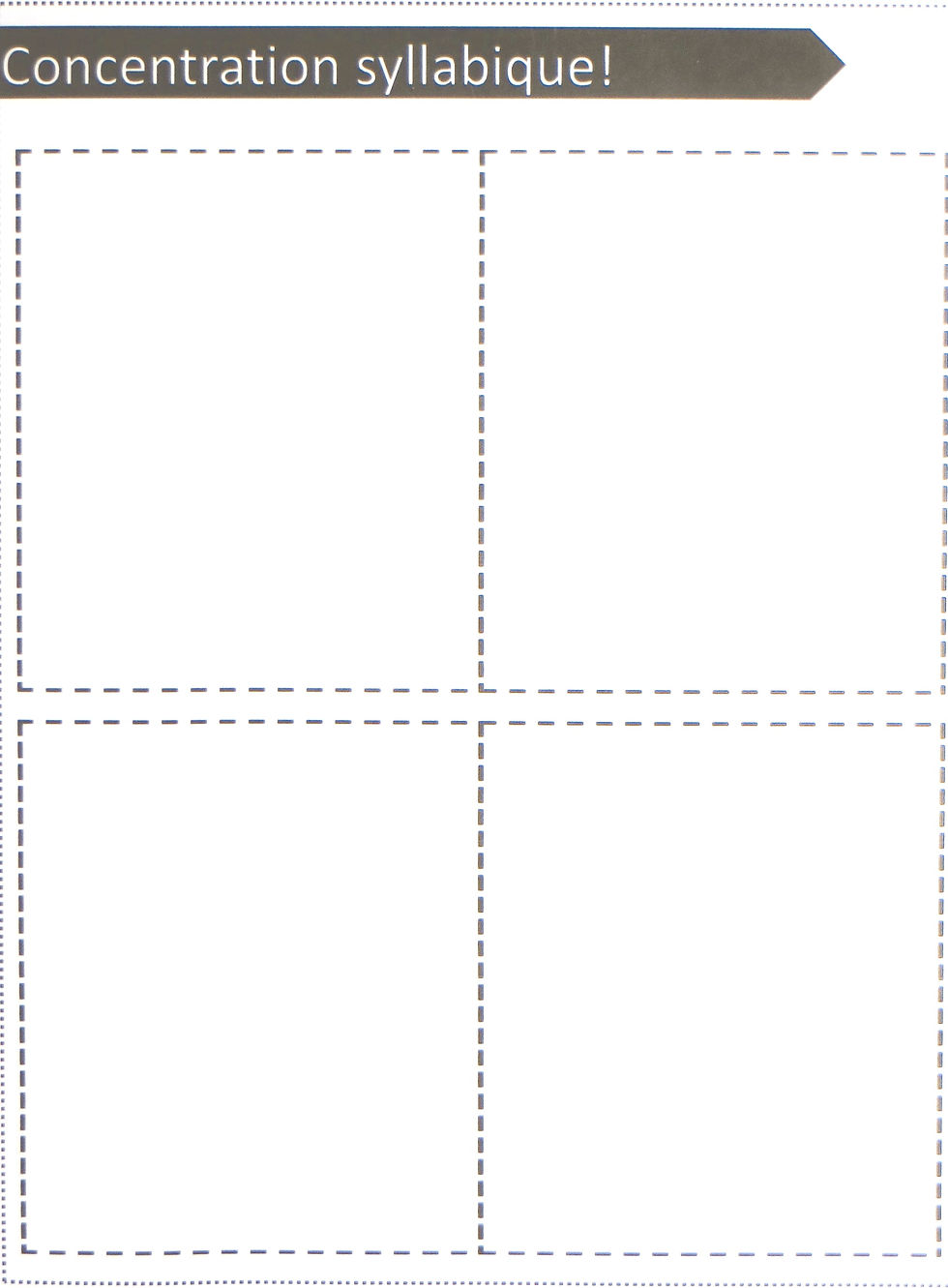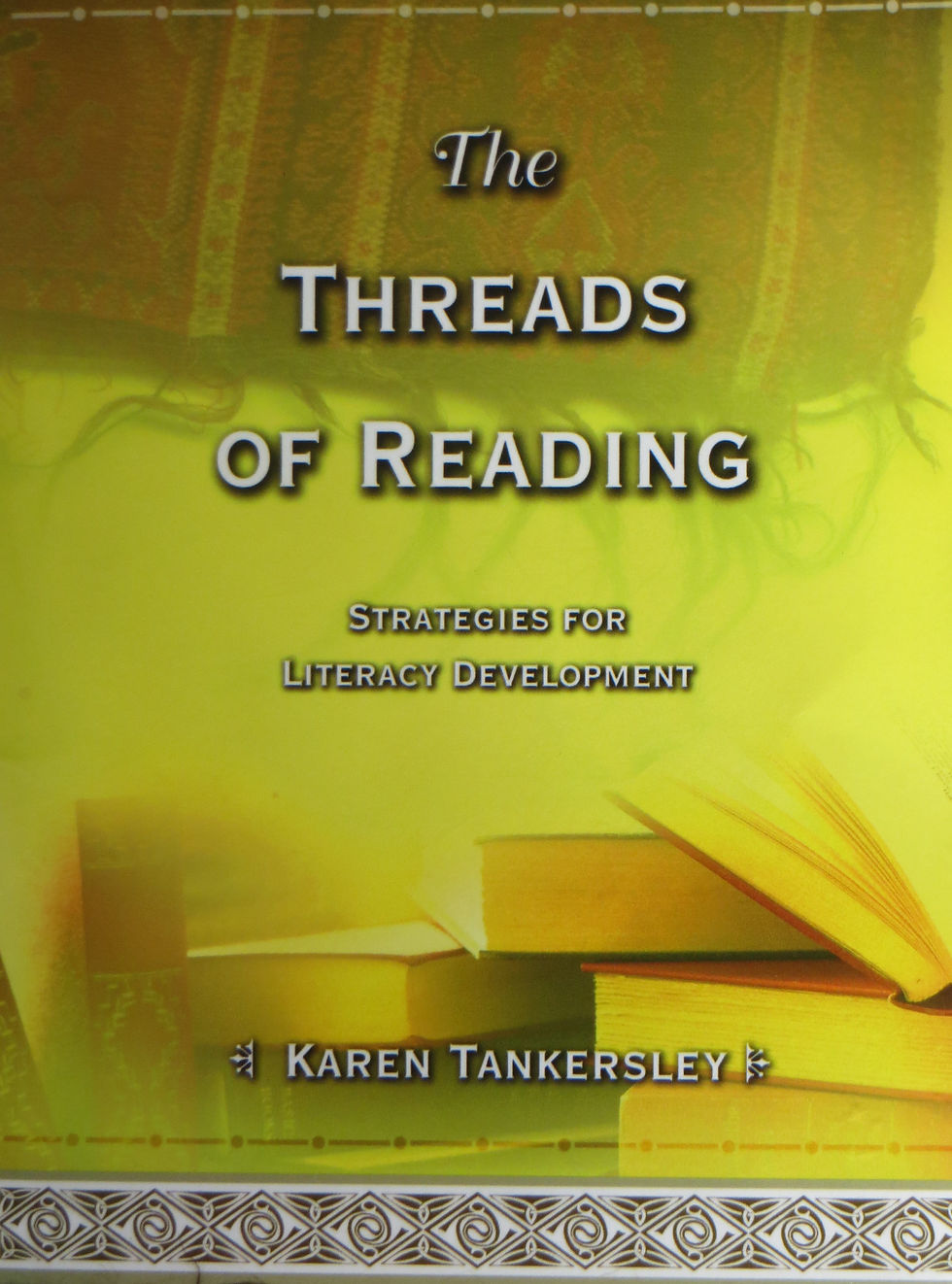Making Syllable Awareness Fun using the ELR Resource!
- FrenchTwistsFSL

- Dec 3, 2020
- 3 min read

To date, we have introduced you to both the "image à partager" and the first comptine of the Ecoutons, lisons, rions sound unit, Kira le grand boa. We used the vocabulary from the comptine to:
-introduce students to the featured vowel sound (Nov.12th post)
-help students identify initial and final sounds in words. (Nov. 19th post)
We will now turn our attention to making students syllable aware using the ELR activity: Concentration syllabique!
The Concentration syllabique game comprises vocabulary cards from the above comptine along with one or two new decodable words containing the featured vowel sound. The vocabulary cards show words segmented into their syllabic parts in addition to a segmented image. Words that only have one syllable are illustrated with a question mark. These cards can be allotted a special status when in play (ex: ask a friend for help, guess the missing syllable etc.). Four additional versions of the Concentration syllabique game are described in the teacher guide to add variety each time this syllable activity is presented to your class in association with the 4 comptines found in the remaining ELR sound units. (see Sept. 30th post for a complete list of our units)
Setting up the Activity
STEP 1
Copy the vocabulary cards onto card stock. Laminate and cut the cards along the dotted lines.
STEP 2
Using a document camera, display the cards face down on a table. Select a student to turn over two cards. If the two cards selected result in the creation of a real word, the teacher can initiate syllable awareness by asking the students the following questions:
Quel mot formons-nous lorsque ces syllabes sont combinées?
ba nane=banane
Combien de syllabes contient ce mot? (2)
Dis le mot "banane" mais ne dis pas /ba/
réponse: /nane/
Répète le mot "banane" encore une fois, mais ne dis pas /nane/
réponse: /ba/
By helping students realize that words are made up of syllables that can be manipulated, students can then apply these skills when learning to read.
STEP 3

As you read your favourite selection of French stories to students, make it a point to draw their attention to other words that contain the vowel sound that you are learning. Using the Concentration syllabique template found on the ELR resource CD, add additional vocabulary words to your game cards! You can even place your game cards in the reading centre to encourage reading practise as your students play the Concentration syllabique activity independently.
The Ecoutons, lisons, rions teacher's guide offers additional syllable practice through "les jeux supplémentaires". These syllable games are designed for class participation but can be modified to suit the needs of small learning groups as well. Should you wish to try the "Concentration syllabique" activity in your classroom with your primary FI students, please send us an email at fumoguerriero@gmail.com. We would be happy to send you a copy of the activity.
IN OUR NEXT BLOG: Using additional French resources to complement your use of the Ecoutons, lisons, rions material in the primary FI classroom!
DID YOU KNOW?

In her book, The Threads of Reading, K Tankersley states that syllable awareness "forms the backbone of phonemic awareness in children." (Tankersley, page 15) As children become skilled at recognizing and manipulating syllable units in words, they increase their ability to read a greater number of unknown words with the letter sounds they have learned. Accordingly, syllable awareness is a key phonemic skill that students should master as they build their word awareness toolkit.
Tankersley, K (2003). The Threads of Reading: Strategies for Literacy Developement. Alexandria, Virginia: ASCD













Comments